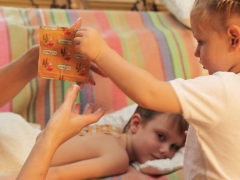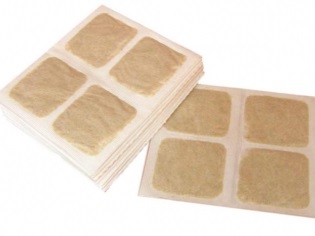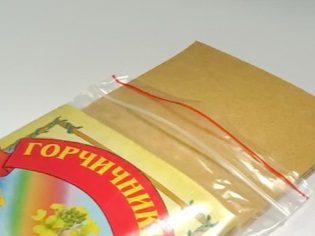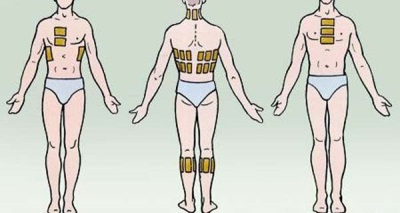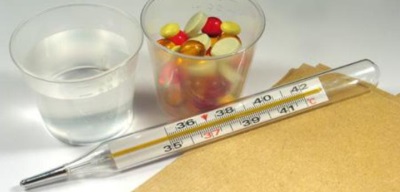How to put mustard plasters for children when they cough?
One of the auxiliary methods of treating cough that occurs with colds or ARVI is the use of mustard plaster. They are sheets or bags of mustard powder.
Tips on the use of mustard plasters are especially often heard from the older generation, but young parents should figure out on their own how the use of mustard affects the child when its use is prohibited and how to carry out the procedure correctly.
Operating principle
Mustard powder has an irritating and distracting effect. Upon contact with water, the release of essential oils from it, which affect the skin and vessels, begins. The result will be activation of blood circulation, improvement of metabolic processes at the site of application, as well as reflex stimulation of the vegetative part of the nervous system.
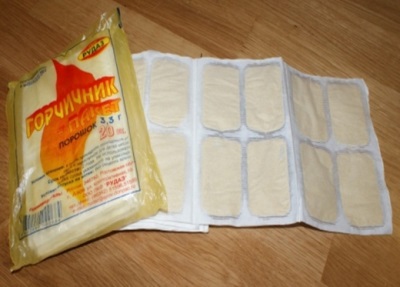
When used for the purpose of eliminating cough, mustard plasters will increase the blood supply to the mucous membranes of the bronchi and thereby increase the volume of secreted mucus.
Indications
The use of mustard plaster is often used in acute respiratory viral infections, when airways are affected, for example, in laryngitis, tracheitis or bronchitis. They are prescribed with a dry, exhausting cough in order to activate the production of sputum during the recovery period.
Often, mustard plasters are prescribed for edema of the respiratory tract, for example, in the larynx and nasopharynx. In this case, mustard plasters are placed on the legs, thereby redistributing blood in the body, facilitating breathing and swallowing.
Although much less often, but the use of mustard plaster is also recommended for bruises or sprains, muscle pain and neuralgia.
Contraindications
- Mustard plasters can not be used in the active phase of the disease, since such a procedure due to its thermal effect will enhance the inflammatory process. Their use is contraindicated at elevated temperatures, as well as the day after the temperature returned to normal.
- It is forbidden to put mustard plasters on damaged or inflamed skin, as well as on places of birthmarks.
- Some children have a severe allergic reaction to mustard, so before the first procedure, a small piece of mustard must be cut off and put on the baby’s skin for 10 minutes. When a burning sensation and redness appear, the use of mustard plaster is rejected.
- The mustards are capable of causing burns, therefore the areas of their overlay are constantly changing, and the procedure itself is not carried out for longer than 4 days in a row.
- Mustard vapors can cause laryngeal spasm and labored breathing. This leads to a ban on the procedure for bronchial asthma, obstructive bronchitis and laryngotracheitis.
- Mustard plasters are not used for tumor processes, neurodermatitis or psoriasis.
In the next video, the doctor will tell you when and how to put mustard plasters.
Can the procedure be done for children under 1 year old?
Mustard plasters are not recommended for the treatment of infants, so babies under one year of age do not have this procedure. Experts advise to limit the use of mustard plaster and at the age of 1-3 years.The use of such treatment when coughing in a 2-year-old child should be very careful and less lasting than in children 4 years and older.
Types of mustard plaster
Modern mustard plasters are sold as:
- Sachets. Inside there is a mustard powder, and the bag itself is divided into 2-4 cells. This form is more often used in early childhood.
- Leaves. They are covered with a thin layer of mustard powder. They are used for older children, for example, at age 7.
In addition to such mustard plasters, dry mustard can be used for the procedures. It is usually bought for foot compresses.
How and where to put mustard plaster?
Places for applying mustard plaster to help the child get rid of dry cough is the chest and back. Also mustard plasters can be put on the feet and muscles of the leg.
If mustard plasters are placed on the chest, it is important to avoid the heart and nipples area, and when performing the procedure on the back, mustard plasters cannot be placed above the spine and kidney area.
To put mustard plasters when coughing, your actions should be as follows:
- After reading the instructions, prepare a container with heated water (its temperature should not exceed + 45 ° C).
- Put the baby on the bed.
- Dip each mustard plaster in water for 5-10 seconds, attach it to the skin and gently smooth it.
- Cover the body area with mustard plasters with a towel.
- Periodically check the skin reaction to the procedure.
- When the skin is clearly reddened (usually this happens after 5-10 minutes), remove mustard plaster and rinse the skin with warm water.
- Lubricate the skin with cream or baby oil.
The time of the procedure
The procedure is carried out 1 time per day. The best time to use mustard plaster is called evening. They are placed on the body of a child who lies in bed and is about to fall asleep.
Babies aged from one to three mustard plasters hold no longer than two minutes.
How to put mustard plasters on the feet?
Mustard is often used on the feet to activate the reflexogenic zones of the feet. You can put dry mustard in socks (a teaspoon in each sock) and put them on the baby's legs, leaving it overnight. The procedure is not carried out in infancy and in the acute phase of infection. The application of paper mustard paper to the feet is allowed from 5 years.
Opinion Komarovsky
A well-known doctor refers to the use of mustard plasters as distracting procedures, focusing the attention of parents on such points:
- Mustard plasters will not help cure a child if the disease is serious, and a mild disease, in which mustard is effective, will pass without its use.
- An individual allergic reaction to mustard is quite common.
- Mustard fumes will irritate the mucous membranes, so children with a tendency to allergies or obstruction are contraindicated at home.
- Before the procedure, you should make sure that the mustard plaster has not expired.
- If mustard plasters torment a child, it is better to refuse such a procedure, because in the fight against ARVI it is much more efficient to use clean, moist air and plenty of drink.
You can learn more about the opinion of Dr. Komarovsky in the following video.
Tips
- Store an open bag with mustard plasters in a refrigerator.
- Prepare for the procedure in advance and put a baby cream and a towel next to it to cover the baby after the end of the procedure.
- If the baby begins to complain of a burning sensation or during the procedure, an irritating cough has occurred, immediately remove the mustard plasters and rinse the skin thoroughly.
- Remember that redness after the procedure may remain for several days. The duration and degree of redness is determined by the individual sensitivity of the skin of the child.
- At the age of 3 years lay mustard plasters on the skin of a child are advised on the reverse side. So, the mustard effect will be softer.
